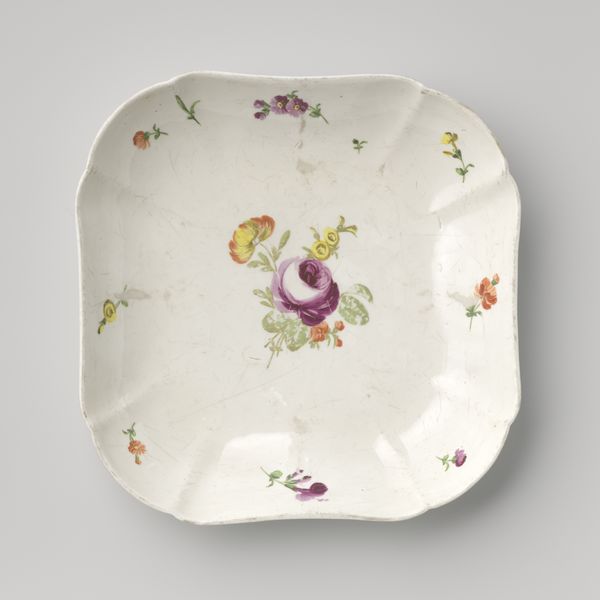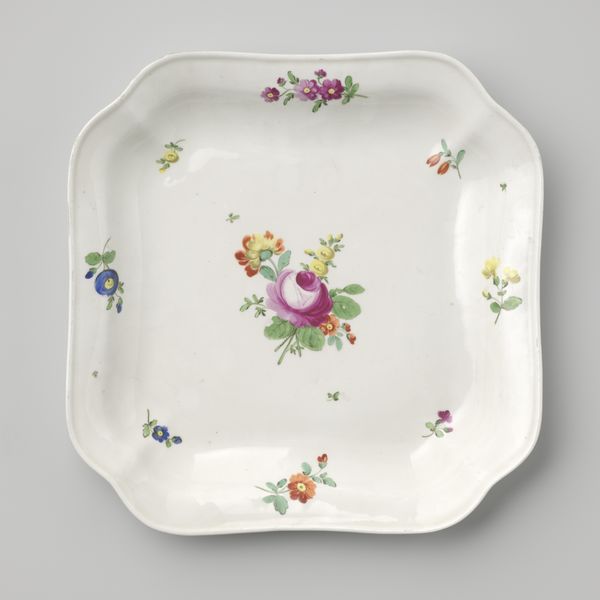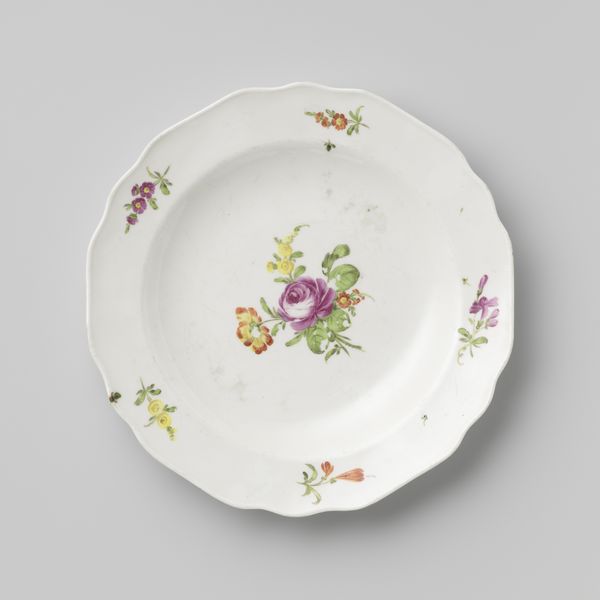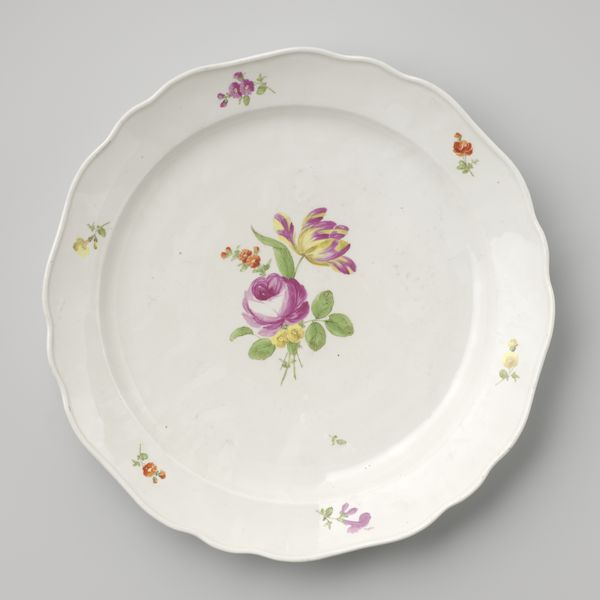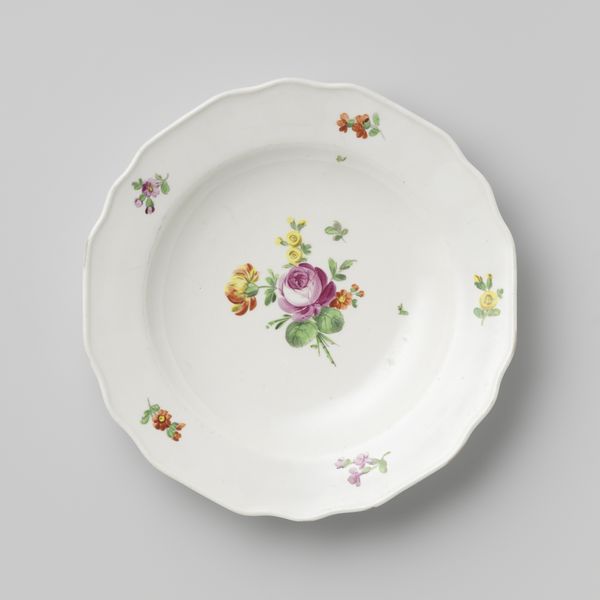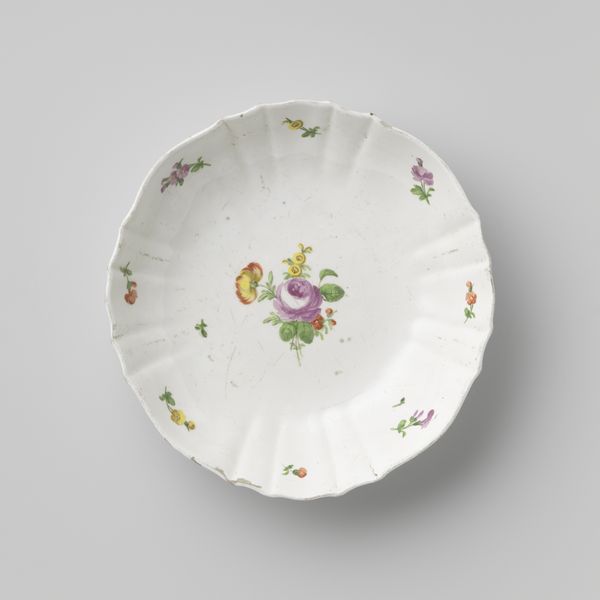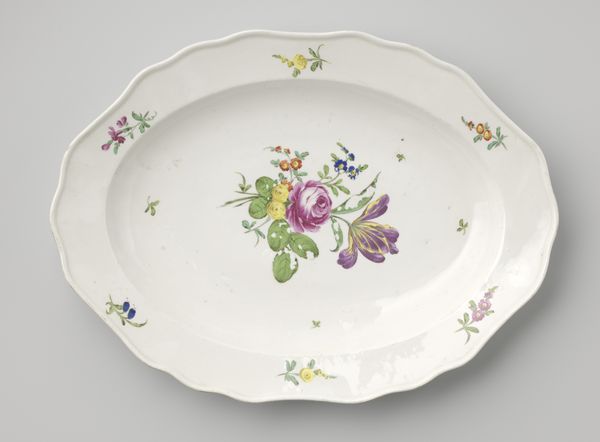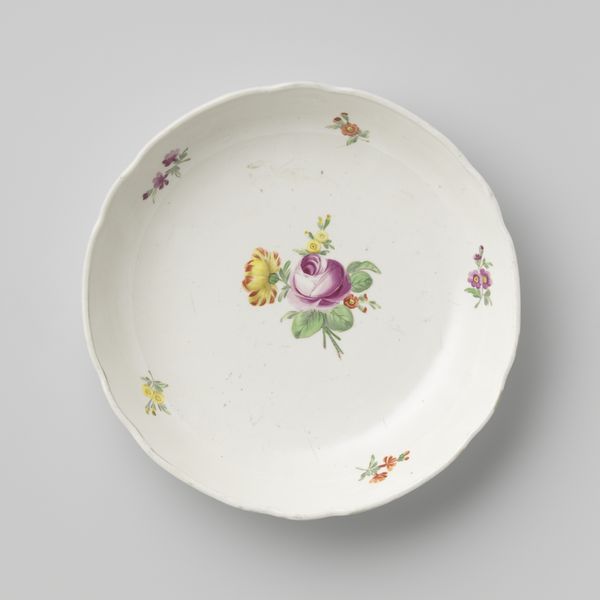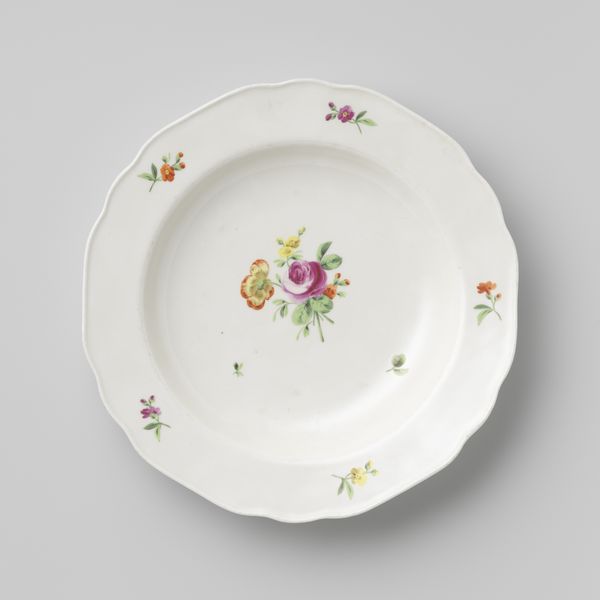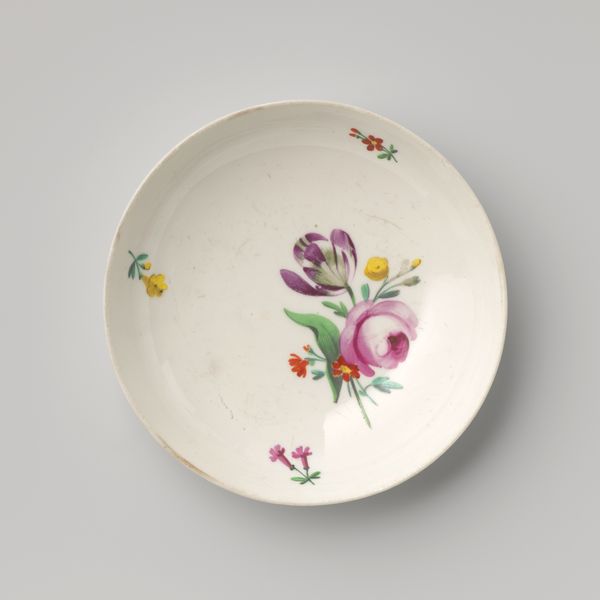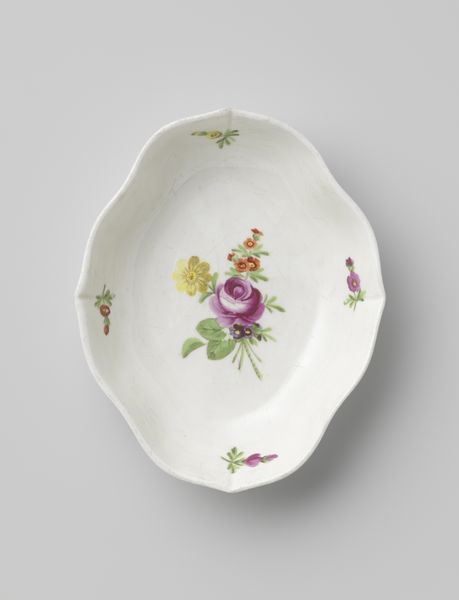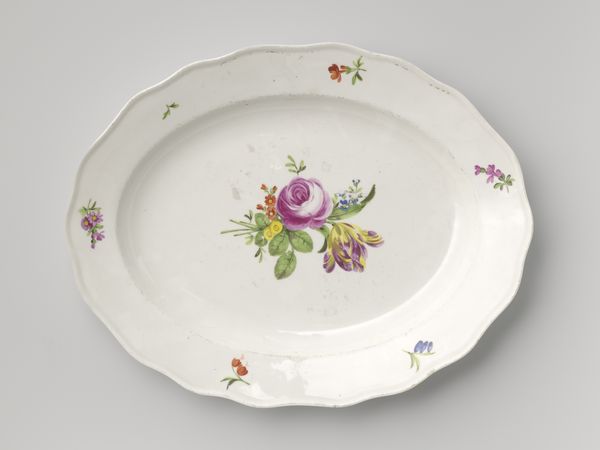
Dimensions: height 4.7 cm, width 24.5 cm, depth 23.7 cm, width 15.4 cm, depth 15.2 cm
Copyright: Rijks Museum: Open Domain
Curator: Here we have a porcelain dish made by the Kaiserliche Porzellanmanufaktur sometime between 1800 and 1849. It’s titled "Dish with a bouquet and flower sprays", and is a charming example of decorative art. Editor: My first thought? "Dainty." It's so light and airy, with those delicate flowers scattered across the white surface. Like a springtime whisper on a formal tea table. Curator: Yes, it’s definitely playing within that Rococo aesthetic - very refined, catering to elite tastes, and designed to elevate everyday objects to a level of art. These porcelain manufactories were supported by royalty to promote national prestige. Editor: I imagine ladies gossiping over crumpets, nervously balancing this very dish... It gives the impression of fragility, doesn't it? All those pale shades, that rose like something out of a dream, that slight irregularity to the rim. Beautifully imperfect. Curator: That "imperfection," as you call it, is indicative of handcrafting, which, ironically, added to its value for its original owners. These dishes circulated in elite social circles, conveying taste and status. Flowers were incredibly symbolic during this time—their placement and type often carrying secret messages. Editor: Oh, secret messages hidden within a sprig of yellow? How very sly. Maybe a rendezvous, or a hidden love affair right in the parlor room... I love that idea! Makes you wonder what this particular bouquet signifies. What stories did it quietly witness over endless cups of tea? Curator: Absolutely. The "flower sprays" weren't merely decorative; they were actively participating in the language of courtship and societal games played by wealthy European families. They reveal much about how meaning was crafted in this specific social context. Editor: Well, looking at it now, I almost feel as though I’m intruding. On a stolen moment, on a shared secret... It is also really a testament to those artisans, all the craft put into something used to carry tiny cakes and spilled tea. Curator: Indeed. The seemingly simple design belies a complex intersection of artistic skill, social custom, and economic power. Thank you for sharing such a vibrant perspective on this porcelain piece. Editor: And thank you for revealing its richer history. Now I can appreciate this "Dainty Dish," with an expanded view of that complex world it lived in. It suddenly looks a lot less quiet.
Comments
No comments
Be the first to comment and join the conversation on the ultimate creative platform.
